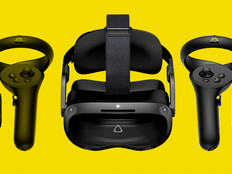I Spy ... a Powerful Microscope for Students of All Ages
Ever wonder what a fingerprint, credit card or shell case pin mark looks like when magnified to 40x? What about a memory chip at 140x?
With Zarbeco's MiScope handheld digital microscope, your students will wonder if they're attending biology class or cracking a case for CSI.
When I walked the exhibition floor at the ISTE 2011 conference, I was determined to find products that I believed would engage students and support STEM (science, technology, engineering and mathematics) programs in the classroom. When I turned one corner and saw a 3-foot-wide head of a fly projected live on a screen, I knew I had to stop for a closer look. The image before me was like something out of a science fiction movie!
A fellow conference attendee was holding a small object (smaller than a baseball) against a cylinder about the size of a roll of quarters. A nearby TV monitor displayed the hundreds of newborn flies crawling around inside the cylinder. Although the flies were tiny, they appeared enormous on the monitor.
It turns out that zooming in on any object is incredibly easy with the MiScope, which combines a digital movie camera, precision optics and LED lighting in a palm-size microscope with a magnification range of 40 to 140x. The MiScope's Video ToolBox software, along with its suite of tools and accessories, gives students the power to capture, manage, label, present and view large, detailed images or videos on a computer or projector screen.
A slider mechanism on the side makes it easy to zoom in and out and adjust focus with nothing more than a thumb. The MiScope even allows users to capture images or videos by connecting to a notebook or desktop computer's USB port.
Once you spend five minutes with the MiScope, you'll probably want to donate your old microscopes to charity. That's because traditional microscopes allow only one student at a time to examine what they're displaying. But with a MiScope connected to a computer monitor, TV or projector, the whole class sees the same thing simultaneously. Now, teachers can set up a science lab anywhere in their classroom.
Because the device itself is small and easy to use, children as young as kindergarten age can get in on the action. But the tool is equally effective in a high school classroom. Students not only can see a fly's head with the device, they can count the number of hairs on its tongue.
Given what I've seen, I think the MiScope digital microscope would be a perfect addition to any K–12 classroom.
For more ISTE coverage, get the full picture in the ISTE 2011 Wrap-up.
 Follow Buzz on Twitter: @buzzgarwood
Follow Buzz on Twitter: @buzzgarwood








